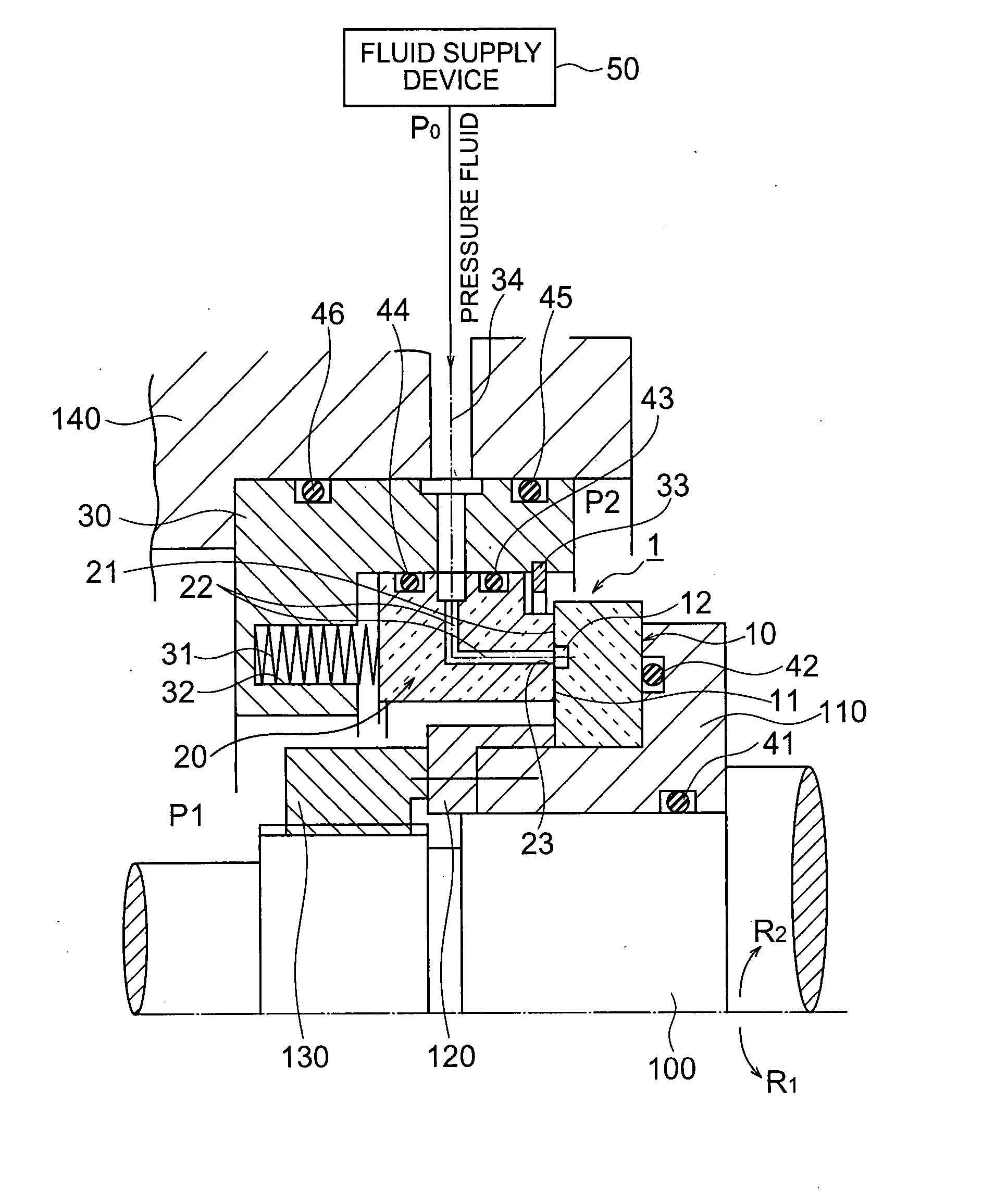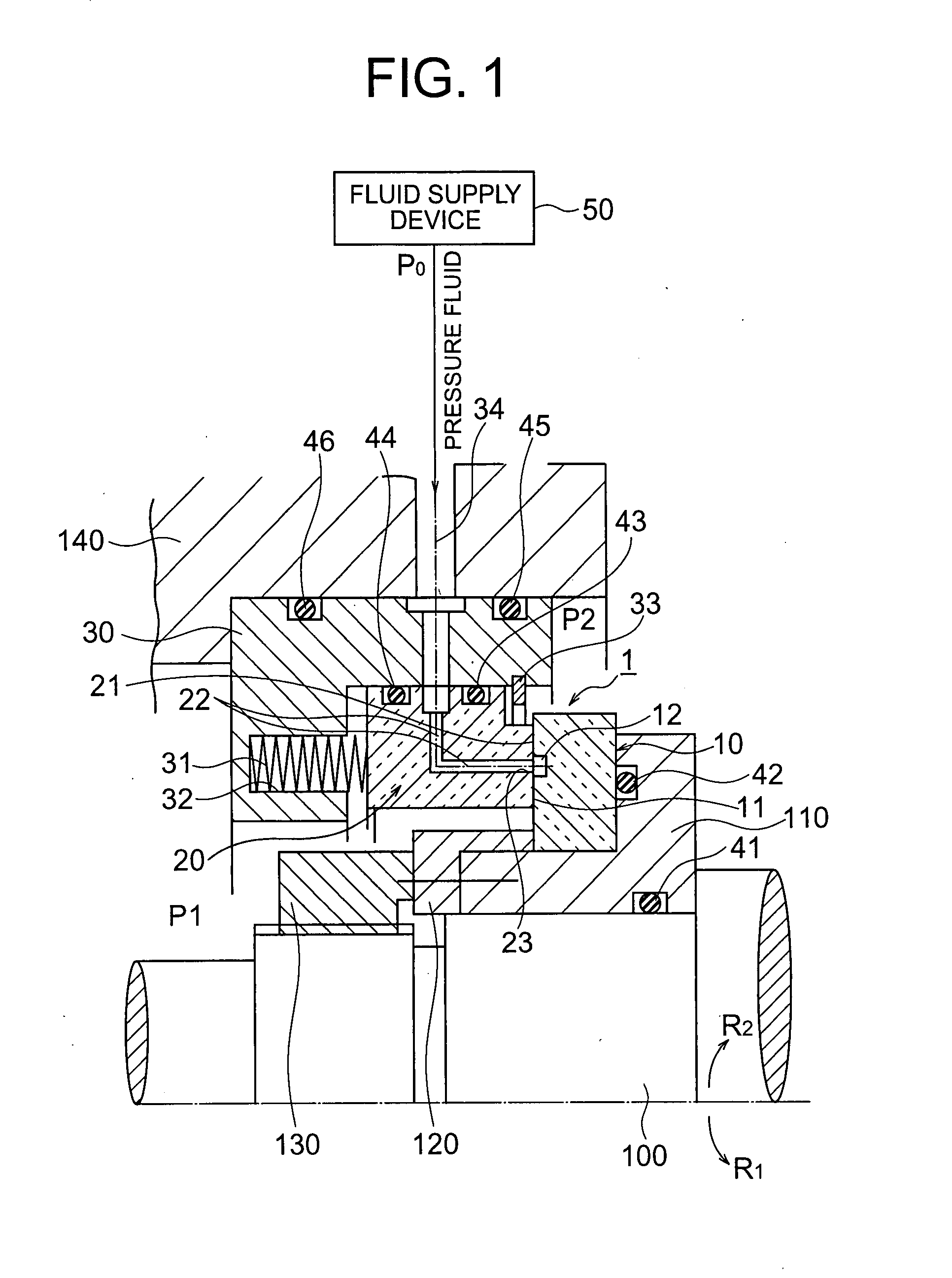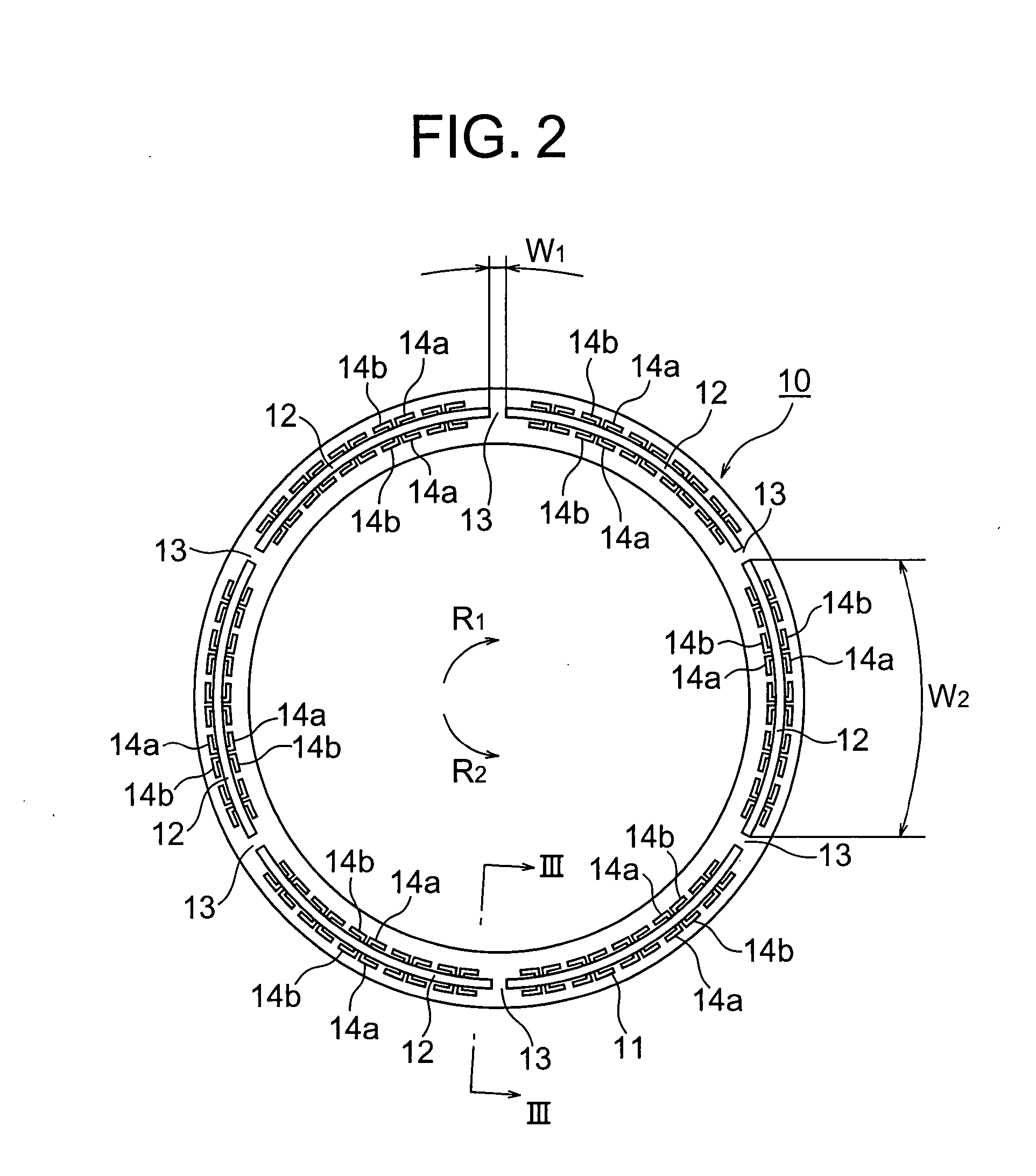Mechanical Seal Device
- Summary
- Abstract
- Description
- Claims
- Application Information
AI Technical Summary
Benefits of technology
Problems solved by technology
Method used
Image
Examples
example 1
[0133] As a mechanical seal device of an example 1, a rotational seal ring having arc-shaped grooves formed thereon and a stationary seal ring having circular-shaped outlet portions formed thereon were used to produce a mechanical seal device configured as explained in the first embodiment. In the example 1, a depth t1 of the arc-shaped grooves was 1 mm, a circumferential direction length W2 of the arc-shaped grooves was 112 mm, a circumferential direction length W1 of the partition walls was 4 mm and a circumferential direction length W3 of the outlet portions was 2 mm. A production condition of the mechanical seal device produced in the example 1 is shown in Table 1.
[0134] [Table 1]
TABLE 1Partition WallArc-shaped GrooveCutOutlet PortionDepthCDL*CDL*AmountDepthCDL*Formedt1W2W1Cut ort1−t0Formedt2W3or Not[mm][mm][mm]Not[mm]or Not[mm][mm]Example 1Yes11124No—No—2Example 2Yes11124Yes0.07No—2Example 3Yes0.051124No—Yes0.515.4ComparativeNo———No—Yes0.25112Example
*CDL = Circumferential Dire...
example 2
[0137] As a mechanical seal device of an example 2, a rotational seal ring having arc-shaped grooves formed thereon and low partition walls and a stationary seal ring having arc-shaped outlet portions formed thereon were used to produce a mechanical seal device configured as explained in the seventh embodiment. In the example 2, a depth t1 of the arc-shaped grooves was 1 mm, a circumferential direction length W2 of the arc-shaped grooves was 112 mm, a circumferential direction length W1 of the partition walls was 4 mm, a cutting amount (t1−t0) at upper parts of the partition walls was 0.07 mm and a circumferential direction length W3 of the outlet portions was 2 mm. A production condition of the mechanical seal device produced in the example 2 is shown in Table 1. Vibration evaluation was made on the mechanical seal device of the example 2 under conditions of 31 patterns in the same way as in the example 1. FIG. 20 is a graph showing a result of the vibration evaluation of the mecha...
example 3
[0138] As a mechanical seal device of an example 3, a rotational seal ring having arc-shaped grooves formed thereon and a stationary seal ring having arc-shaped outlet portions formed thereon were used to produce a mechanical seal device configured as explained in the eighth embodiment. In the mechanical seal device of the example 3, a depth t1 of the arc-shaped grooves was 0.05 mm, a circumferential direction length W2 of the arc-shaped grooves was 112 mm, a circumferential direction length W1 of the partition walls was 4 mm, a depth t2 of the outlet portions was 0.5 mm and a circumferential direction length W3 of the outlet portions was 15.4 mm. A production condition of the mechanical seal device produced in the example 3 is shown in Table 1. Vibration evaluation was made on the mechanical seal device of the example 3 under conditions of 28 patterns in the same way as in the example 1. FIG. 21 is a graph showing a result of the vibration evaluation of the mechanical seal device i...
PUM
 Login to View More
Login to View More Abstract
Description
Claims
Application Information
 Login to View More
Login to View More - R&D
- Intellectual Property
- Life Sciences
- Materials
- Tech Scout
- Unparalleled Data Quality
- Higher Quality Content
- 60% Fewer Hallucinations
Browse by: Latest US Patents, China's latest patents, Technical Efficacy Thesaurus, Application Domain, Technology Topic, Popular Technical Reports.
© 2025 PatSnap. All rights reserved.Legal|Privacy policy|Modern Slavery Act Transparency Statement|Sitemap|About US| Contact US: help@patsnap.com



